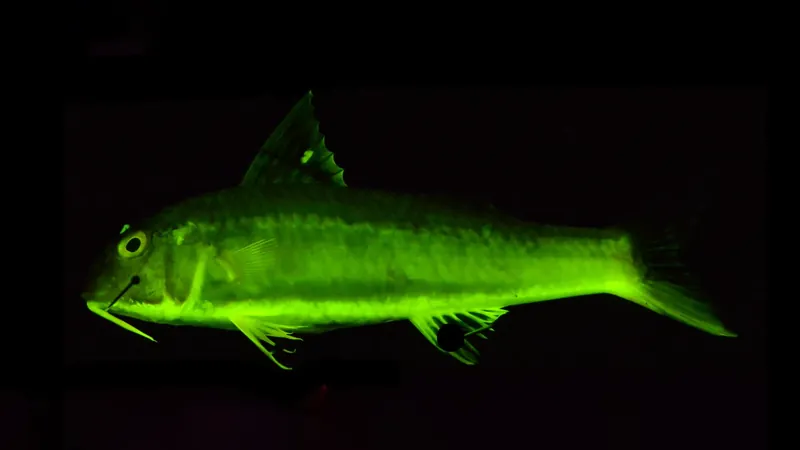
Dive Into the Colorful Secrets of Biofluorescent Fish: A 112-Million-Year Journey!
2025-06-17
Author: Siti
Unlocking Nature's Colorful Mysteries
Recent groundbreaking research has unveiled the stunning phenomenon of biofluorescence in marine fishes, showcasing a dazzling spectrum of colors that goes beyond what was previously understood. This remarkable ability allows organisms to absorb light, transform it, and emit it in different, vibrant hues, creating a breathtaking underwater display.
A Deep Dive into Research
Emily Carr, a Ph.D. student at the Museum's Richard Gilder Graduate School and lead author of the research, emphasizes the importance of understanding why and how various species utilize this unique adaptation, whether for camouflage, hunting, or mating. The study provides new insights into the evolutionary history of biofluorescence in marine life.
A Spectacular Discovery of Species
Carr spearheaded an extensive survey that identified 459 biofluorescent species among teleosts, a major group of bony fish. Astonishingly, 48 of these species were previously unknown to exhibit biofluorescence. With origins dating back approximately 112 million years, biofluorescence has independently evolved over 100 times in these marine creatures, starting with eels.
Reef Fish Shine Brightest
The study highlights that fish residing around coral reefs developed biofluorescence at a rate ten times higher than their non-reef counterparts. Following the catastrophic Cretaceous-Paleogene extinction event 66 million years ago, which wiped out the dinosaurs, there was a notable increase in fluorescent species, correlating with the evolution of modern coral reefs.
Advanced Techniques Reveal Stunning Variations
Using cutting-edge photography techniques, Carr and her team explored the astounding diversity of fluorescent emissions in fishes from the Museum's Ichthyology collection. With specimens gathered from sites like the Solomon Islands, Greenland, and Thailand, researchers uncovered that some fish families emit six distinct fluorescent peaks across multiple colors—a true feast for the eyes!
Implications Beyond the Ocean Floor
The variety of fluorescent emissions not only enhances our understanding of marine biodiversity but also holds promising implications for biomedical applications. Novel fluorescent molecules discovered through this research could transform techniques in disease diagnosis and therapy, proving that the wonders of the ocean might extend far beyond its depths.
Collaborative Efforts in Exploration
The research shines a spotlight on teamwork, involving contributions from experts across various institutions, including the University of Nebraska-Lincoln and Clemson University. Funding and support from organizations like the National Science Foundation and the Dalio Foundation underscore the collaborative spirit driving this vital exploration of our ocean's hidden gems.



 Brasil (PT)
Brasil (PT)
 Canada (EN)
Canada (EN)
 Chile (ES)
Chile (ES)
 Česko (CS)
Česko (CS)
 대한민국 (KO)
대한민국 (KO)
 España (ES)
España (ES)
 France (FR)
France (FR)
 Hong Kong (EN)
Hong Kong (EN)
 Italia (IT)
Italia (IT)
 日本 (JA)
日本 (JA)
 Magyarország (HU)
Magyarország (HU)
 Norge (NO)
Norge (NO)
 Polska (PL)
Polska (PL)
 Schweiz (DE)
Schweiz (DE)
 Singapore (EN)
Singapore (EN)
 Sverige (SV)
Sverige (SV)
 Suomi (FI)
Suomi (FI)
 Türkiye (TR)
Türkiye (TR)
 الإمارات العربية المتحدة (AR)
الإمارات العربية المتحدة (AR)